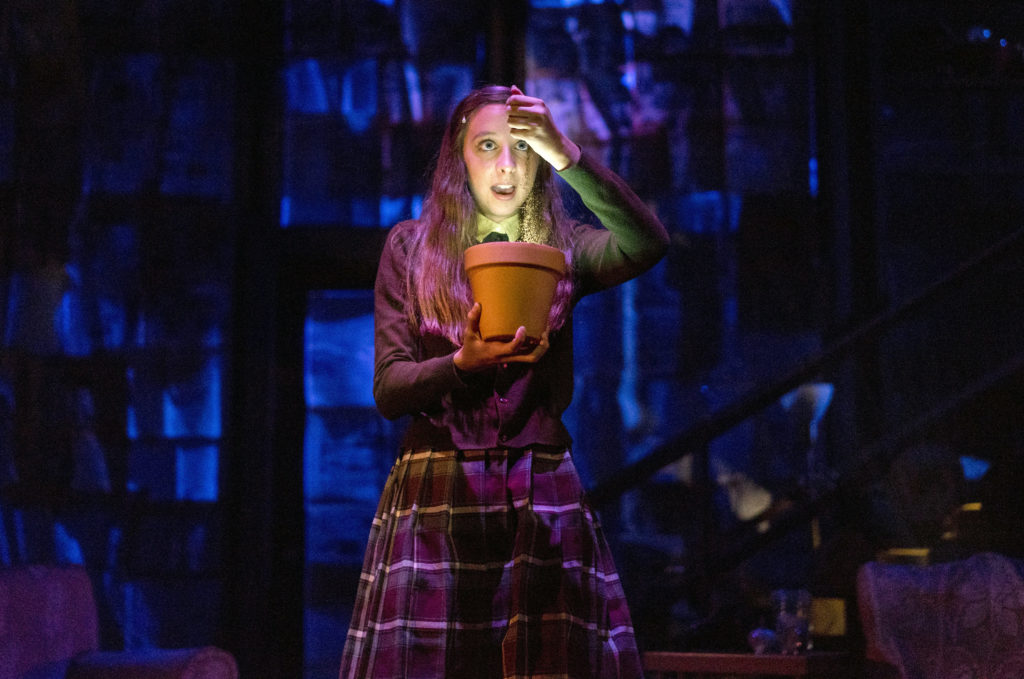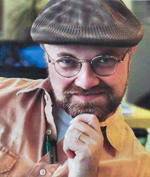
By Eric George Tauber

SAN DIEGO — According to the Law of Conservation of Energy, energy can be neither created nor destroyed. It simply changes form. For example, as the sun warms the earth the seeds convert thermal energy into chemical energy stored in fruit. We consume these carbohydrates to give us the energy to tend our gardens … and so on. These are the kinds of things we learn in school. And there’s nothing like the hands-on science fair projects like growing flowers to learn about The Effects of Gamma Rays on Man in the Moon Marigolds by Paul Zindel.
Most teenagers think their parents are “a little nuts.” But what if their mental health issues really are ruining your life? How is a growing child to cope?
The bright and plucky Abby Depuy plays Tillie Hunsdorfer, an awkward science nerd who wants to go to school. Her science teacher, Mr. Goodman, really believes in her. But Tillie is too often kept at home by her overbearing, chain-smoking, whiskey-swigging mother to clean the rabbit droppings in their pig-sty of a house. Tillie loves the beautiful poetry of particle physics. Indeed, it’s the only thing that really brings a light into her eyes. But her mother just shoots her down because “all that science talk” gives her a headache.
Deanna Driscoll is captivating as the demanding and selfish mother, Betty the Loon. Her flirtations with Mr. Goodman–revealed in one-sided phone conversations–are just desperate enough to be pitiable. We soon see that her cruel behavior toward her daughters stems from her own self-hatred.
Big sister Ruth is “the pretty one.” She’s not as bright or studious as her little sister, but she knows how to wield her tongue like a knife when she wants to. Rachel Esther Tate played Ruth’s night terrors and seizure with such conviction that my blood ran cold.
Then there’s old Nanny, who seems largely oblivious to the going on around her. And yet, through the very convincing age makeup by Peter Herman, Carm Greco’s eyes behold a dark and distant world all her own.
Michelle Marie Trester owns her moment in the spotlight as the wild-eyed, sociopathic Janice, Tillie’s science fair rival, who boiled the skin off a cat and reassembled the bones. Don’t tell me where they got a cat’s skeleton. I don’t want to know.
Hats off to Director Rob Lutfy and the design team for creating a world in microcosm that’s as dark, messy and vibrant as the human mind. It’s not a happy childhood and they’re not a high-functioning family. Yet the gamma rays shine a narrow beam of hope in Tillie’s insatiable thirst for knowledge, finding exciting beauty in mutation.
We are all the stuff of stars, composed of the same energy as the Big Bang, never truly dying but constantly changing form. This should strike a chord in students of Kabbalah (Jewish mysticism), which teaches that every soul contains a “divine spark” which emanated from Creation. The sparks are trapped in layers of darkness, but they yearn to return to the Ayn Sof (without end) and that is why we pray.
The Effects of Gamma Rays in Man-in-the-Moon Marigolds plays at the Cygnet Theatre in Old Town through Sunday, Sept. 24th.
*
Tauber is a freelance writer specializing in coverage of the arts. He may be contacted via eric.tauber@sdjewishworld.com